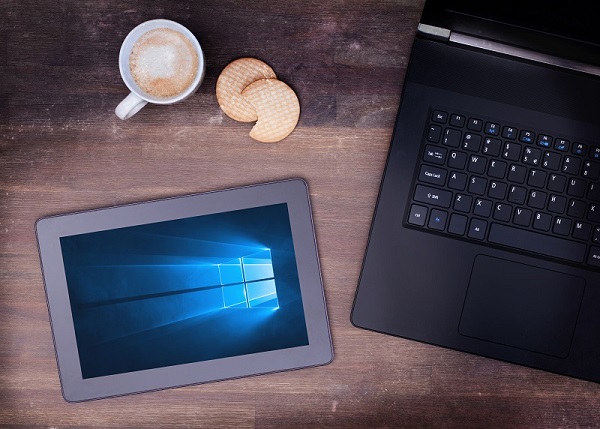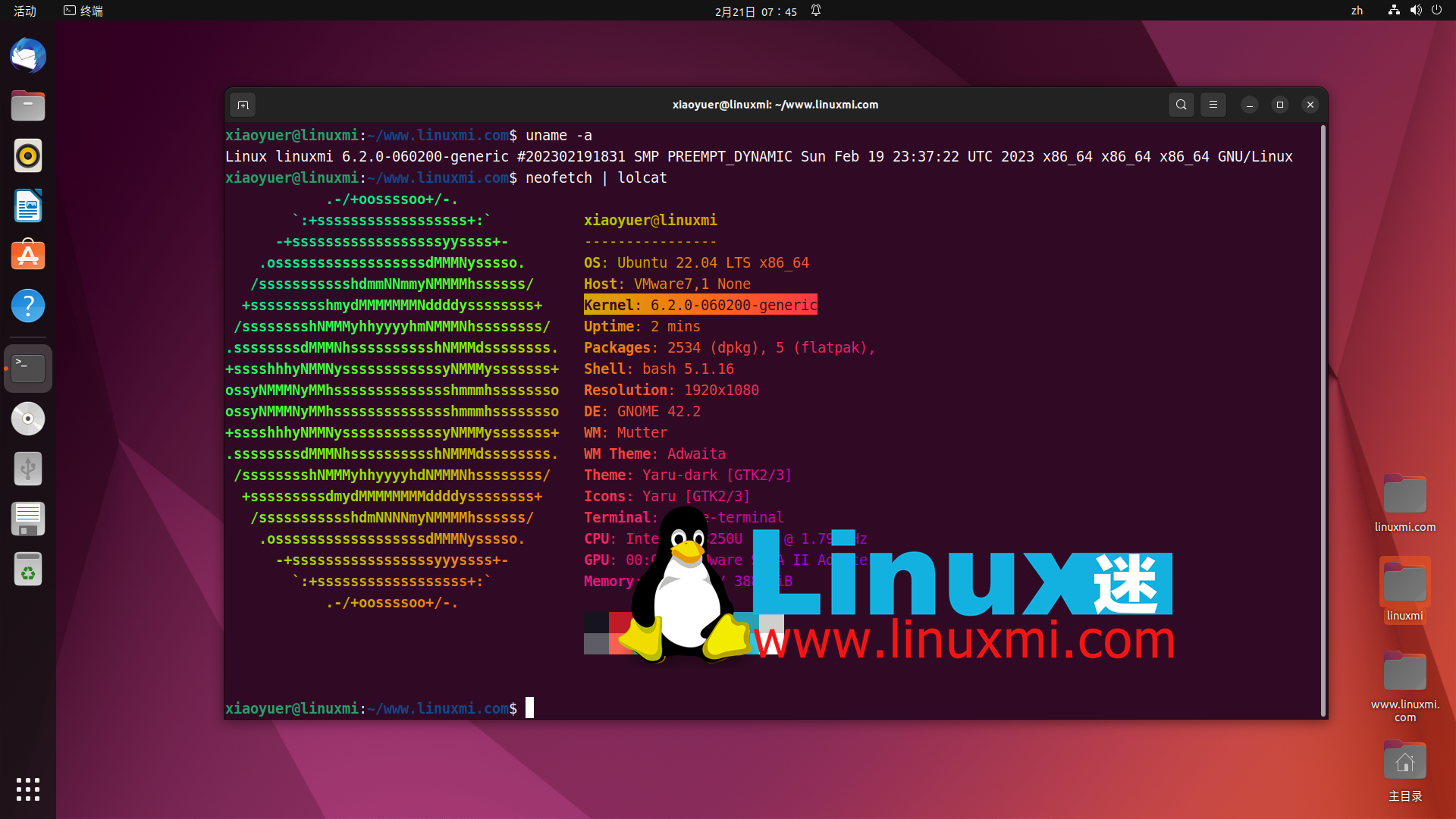Five reasons why you should update your Linux kernel
The Linux kernel is the most important part of the distribution, it controls everything from resource allocation to RGB keyboard drivers.
The Linux kernel continues to receive regular updates that include bug fixes, enhancements to advanced features, and many other enhancements. While no one is forcing you to update to the latest Linux kernel, here are five good reasons why you should.

People often say that Linux is not actually a complete operating system. This is because Linux refers to the kernel of the operating system and does not include other necessary software and tools. Many distributions simply consist of a set of software and package managers that allow you to interact with the underlying kernel.
The working principle of the Linux kernel can be summarized as managing system resources, communicating with peripheral devices, and handling networks and file systems.
Your distribution is useless without the kernel, but neither is the kernel without the tools packaged in the distribution.

1. The kernel of your distribution may be out of date before installation.
All Linux distributions come with a version of the Linux kernel, and many Popular distributions have their own dedicated kernels, based on the mainline Linux kernel. The operating system distribution ships with a kernel that has been extensively tested to ensure there are no compatibility issues, and is therefore stable and functioning properly.
However, stability comes at the expense of newer features. Since stable release kernels are unlikely to keep up with updates to the mainline kernel, you may miss out on the latest features.
2. New kernels support newer hardware
Hardware manufacturers continue to make progress, pushing the limits of what personal computers can achieve. A new generation of graphics cards is designed to render games with dazzling levels of realism, and new types of memory promise higher clock speeds and lower latency.
In order for a Linux distribution to interact effectively with new hardware, it requires corresponding drivers, which may not be included in older versions of the kernel. While you can apply patches to add new features and hardware support, it's usually worth updating the kernel entirely to ensure it supports all your hardware with the latest patches.
3. Upgrade the Linux kernel to prevent vulnerabilities
No software is perfect, and no developer can predict how hackers will abuse their software in the control room. Exploiting memory issues to execute arbitrary code and exploiting vulnerabilities broadly can leave your system vulnerable to malware.
While there have been few successful attacks on the Linux desktop, the Linux kernel is not immune to hackers, crackers, and criminals looking to break into your computer.
Some of the major security vulnerabilities discovered over the years include Dirty COW (a privilege escalation vulnerability that has been exploited for more than a decade), Specter and Meltdown (CPU vulnerabilities affecting multiple platforms), Segment smack, and Dirty Pipe A vulnerability that allows unprivileged users to execute malicious code.
If you upgrade to the latest kernel version, you can be sure to have the most secure version, with all detected vulnerabilities patched and removed.
4. Solve annoying bugs through kernel updates
Bugs may not always cause security problems, but they are often annoying. Things don't work as expected, or produce unexpected results.
Especially errors related to audio and video playback and power issues. Bugs happen, and like real bugs, they appear in unexpected places. If you are using an older kernel version from the early 2000s, you may have noticed that leap seconds can cause kernel panics.
Serious bugs are fixed as soon as they are discovered, and usually updating to the latest Linux kernel results in a more stable system.
5. Kernel updates with new features
Linux kernel updates are not just about making your distribution safe and bug-free. They can make your system run faster and better.
Typically, new kernels bring performance improvements, improved CPU efficiency, new file type compatibility and hardware support.
Impress your friends by using the latest Linux kernel
By using Linux on your desktop, you have become a member of an elite, and a very small number. Your Windows-using friends may think you're a tech wizard.
Impress them further by learning about the specific improvements the latest kernel brings. If you want to show off your technical proficiency, mention that you use Arch.
The above is the detailed content of Five reasons why you should update your Linux kernel. For more information, please follow other related articles on the PHP Chinese website!

Hot AI Tools

Undress AI Tool
Undress images for free

Undresser.AI Undress
AI-powered app for creating realistic nude photos

AI Clothes Remover
Online AI tool for removing clothes from photos.

Clothoff.io
AI clothes remover

Video Face Swap
Swap faces in any video effortlessly with our completely free AI face swap tool!

Hot Article

Hot Tools

Notepad++7.3.1
Easy-to-use and free code editor

SublimeText3 Chinese version
Chinese version, very easy to use

Zend Studio 13.0.1
Powerful PHP integrated development environment

Dreamweaver CS6
Visual web development tools

SublimeText3 Mac version
God-level code editing software (SublimeText3)
 How does resource usage (CPU, memory) differ between Linux and Windows?
Jun 05, 2025 am 12:13 AM
How does resource usage (CPU, memory) differ between Linux and Windows?
Jun 05, 2025 am 12:13 AM
Linux and Windows have their own advantages and disadvantages in CPU and memory usage: 1) Linux uses time slice-based scheduling algorithms to ensure fairness and efficiency; Windows uses priority scheduling, which may cause low-priority processes to wait. 2) Linux manages memory through paging and switching mechanisms to reduce fragmentation; Windows tends to pre-allocate and dynamic adjustment, and efficiency may fluctuate.
 How does the cost of ownership differ between Linux and Windows?
Jun 09, 2025 am 12:17 AM
How does the cost of ownership differ between Linux and Windows?
Jun 09, 2025 am 12:17 AM
Linux's cost of ownership is usually lower than Windows. 1) Linux does not require license fees, saving a lot of costs, while Windows requires purchasing a license. 2) Linux has low hardware requirements and can extend the service life of the device. 3) The Linux community provides free support to reduce maintenance costs. 4) Linux is highly secure and reduces productivity losses. 5) The Linux learning curve is steep, but Windows is easier to use. The choice should be based on specific needs and budget.
 How does the performance of I/O operations differ between Linux and Windows?
Jun 07, 2025 am 12:06 AM
How does the performance of I/O operations differ between Linux and Windows?
Jun 07, 2025 am 12:06 AM
LinuxoftenoutperformsWindowsinI/Operformanceduetoitscustomizablekernelandfilesystems,whileWindowsoffersmoreuniformperformanceacrosshardware.1)LinuxexcelswithcustomizableI/OschedulerslikeCFQandDeadline,enhancingperformanceinhigh-throughputapplications
 How to install Linux alongside Windows (dual boot)?
Jun 18, 2025 am 12:19 AM
How to install Linux alongside Windows (dual boot)?
Jun 18, 2025 am 12:19 AM
The key to installing dual systems in Linux and Windows is partitioning and boot settings. 1. Preparation includes backing up data and compressing existing partitions to make space; 2. Use Ventoy or Rufus to make Linux boot USB disk, recommend Ubuntu; 3. Select "Coexist with other systems" or manually partition during installation (/at least 20GB, /home remaining space, swap optional); 4. Check the installation of third-party drivers to avoid hardware problems; 5. If you do not enter the Grub boot menu after installation, you can use boot-repair to repair the boot or adjust the BIOS startup sequence. As long as the steps are clear and the operation is done properly, the whole process is not complicated.
 How to enable the EPEL (Extra Packages for Enterprise Linux) repository?
Jun 17, 2025 am 09:15 AM
How to enable the EPEL (Extra Packages for Enterprise Linux) repository?
Jun 17, 2025 am 09:15 AM
The key to enabling EPEL repository is to select the correct installation method according to the system version. First, confirm the system type and version, and use the command cat/etc/os-release to obtain information; second, enable EPEL through dnfinstallepel-release on CentOS/RockyLinux, and the 8 and 9 version commands are the same; third, you need to manually download the corresponding version of the .repo file and install it on RHEL; fourth, you can re-import the GPG key when encountering problems. Note that the old version may not be supported, and you can also consider enabling epel-next to obtain the test package. After completing the above steps, use dnfrepolist to verify that the EPEL repository is successfully added.
 How does Linux perform compared to Windows for web server workloads?
Jun 08, 2025 am 12:18 AM
How does Linux perform compared to Windows for web server workloads?
Jun 08, 2025 am 12:18 AM
Linux usually performs better in web server performance, mainly due to its advantages in kernel optimization, resource management and open source ecosystem. 1) After years of optimization of the Linux kernel, mechanisms such as epoll and kqueue make it more efficient in handling high concurrent requests. 2) Linux provides fine-grained resource management tools such as cgroups. 3) The open source community continuously optimizes Linux performance, and many high-performance web servers such as Nginx are developed on Linux. By contrast, Windows performs well when handling ASP.NET applications and provides better development tools and commercial support.
 How to choose a Linux distro for a beginner?
Jun 19, 2025 am 12:09 AM
How to choose a Linux distro for a beginner?
Jun 19, 2025 am 12:09 AM
Newbie users should first clarify their usage requirements when choosing a Linux distribution. 1. Choose Ubuntu or LinuxMint for daily use; programming and development are suitable for Manjaro or Fedora; use Lubuntu and other lightweight systems for old devices; recommend CentOSStream or Debian to learn the underlying principles. 2. Stability is preferred for UbuntuLTS or Debian; you can choose Arch or Manjaro to pursue new features. 3. In terms of community support, Ubuntu and LinuxMint are rich in resources, and Arch documents are technically oriented. 4. In terms of installation difficulty, Ubuntu and LinuxMint are relatively simple, and Arch is suitable for those with basic needs. It is recommended to try it first and then decide.
 How to add a new disk to Linux
Jun 27, 2025 am 12:15 AM
How to add a new disk to Linux
Jun 27, 2025 am 12:15 AM
The steps to add a new hard disk to the Linux system are as follows: 1. Confirm that the hard disk is recognized and use lsblk or fdisk-l to check; 2. Use fdisk or parted partitions, such as fdisk/dev/sdb and create and save; 3. Format the partition to a file system, such as mkfs.ext4/dev/sdb1; 4. Use the mount command for temporary mounts, such as mount/dev/sdb1/mnt/data; 5. Modify /etc/fstab to achieve automatic mount on the computer, and test the mount first to ensure correctness. Be sure to confirm data security before operation to avoid hardware connection problems.







